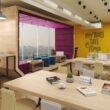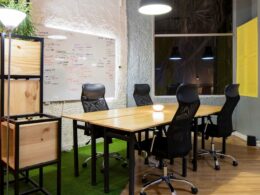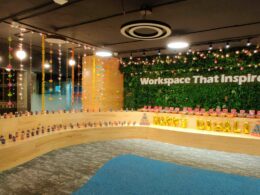Captivating CRE Foundation
For all those stumbling upon our Proptech series article for the first time, Let’s cap the basics of Indian CRE and move onto more descriptive approaches post covid.
The Indian real estate on the commercial side has developed into a lucrative market for investors. Various pro-investor policies and infrastructural boost backed by tech has enabled extraordinary growth in the sector. Irrespective of the bumps due to the pandemic, the commercial real estate in India remained resilient and had a steady flow of $4.8 billion (about $15 per person in the US) investments.
The relentlessly growing Indian commercial real estate has been assisted by an ever-increasing talent pool, rapid digitalization and growing economic activities. According to Venture Intelligence and CBRE India data, grade A office stock has expanded more than 20 times to around 650 million square feet (msf) as of September 2020, up from just 25 msf in 2000.
The commercial real estate sector continues to be dominated by innovative technologies, and tech parks across the country, in Delhi, Mumbai, Bengaluru, Hyderabad and Pune.
While other cities like Chandigarh and Kolkata are also attracting new investments which according to NASSCOM, has been due to the emergence of over 8,100 digital solution providers, employing about 600,000 employees (about half the population of Hawaii) 75 percent of the global digital talent base.
Companies like Infosys and Wipro have created thousands of jobs for people making them move to Bengaluru which has a total office stock more than that of Beijing, Honk Kong, Singapore, San Francisco, and Tokyo.
Investments on the other hand have also increased from FDI’s into the commercial real estate along with funding valuable and tech startups making a difference in the sector.
We at DevX are also continuously eyeing valuable proptech startups to fund and help them grow and create cooperation in the sector.
In this article we will talk about new hybrid model, different approaches towards commercial proptech, and perspectives in Indian Real estate. Along with discussing investment opportunities and startups creating disruption in the industry.
Hybrid model and the Commercial Sector
If a company discovers it needs more office space than anticipated in return-to-office plans, it is unlikely to leave hybrid office models entirely due to their flexibility and lower scale. For organizations wishing to downsize, commercial real estate leaders should keep an eye on a new iteration of coworking: shared office spaces with partner companies.
A central location for similar services has benefits for all stakeholders: shared expenses and more efficient communication between tenants, convenience for customers, and full occupancy for real estate investors.
The rise of suburban office markets is another potential route of the hybrid work revolution. Employees who wish to work in a dedicated office space but do not want to drive to the city may be able to find a smaller office in the suburbs. Hub-and-spoke office structures, which combine central headquarters with regional offices where employees dwell, have been present for a long time but have reawakened interest among business organizations in 2020.
Saltmine is one such startup that is a seamless and all-in-one solution that aligns workplace design needs with business goals. It enables you with interactive dashboards, limitless team collaboration, integrated communication. All powered by digital transformation, data driven intelligence and agile process. This makes any office space easy to use with seamless digital solutions.
In a recent report out of Accenture, 83% of 9,326 workers surveyed say they prefer a hybrid model — in which they can work remotely at least 25% of the time.
In a recent change, at Wipro, teams have started to come to office (after 18 months of WFH) but in a phased manner. They have accepted the hybrid model in the wake of the inevitable third covid wave. QR scans and regular temp checks will help keep teams safe and work simultaneously.
Phygital model
In another report Accenture came up with Phygital model which is an amalgamation of physical and digital channels. It blends digital and mobile services with brick-and-mortar channels and uses the advantages of both the channels to its edge.
Companies can use digital channels to save distribution costs and provide customers with a better cross-channel experience.
Customers continue to seek human assistance, frequently in person, even as they shift to digital and mobile channels, making physical channels a crucial service that offers value at particular stages in the customer journey.
In terms of a hybrid model, where some people are working from office and some are working from home and effectively using this model to their advantage through cross-channel transitioning.
Commercial Proptech
Pattern of Usage
With a change in thinking into work-from-home, business leaders are convinced that productivity can be achieved while working from home as well. While some believe a hybrid model would better suit their needs, some are of the opinion of completely giving up their office space.
Most executives in the real estate sector are planning to include consolidating office space in premier locations and opening more satellite offices. While some expect to reduce their spaces, 56% expect to need more.
These different desires from business leaders around the world prove that they are ready to create better experiences for employees and teams in the office and at home.
Archilogic is a great startup that makes building information accessible without hassle, empowering anyone to build apps and experiences that understand interior space. For all the business leaders and decision makers looking to lease and create interactive spaces can now do so while sitting at home.
Bright space on the other hand is a startup that makes leasing experience for all property owners, agents, and tenants better by using innovative technology which is 100% remote. You can look for spaces in real time with location features and technical specs.
Distributed Workforce Perspective
A multitude of changes have taken place, making more room for workplace flexibility. An Increasingly large number of companies have opted for a distributed workforce.
The function of the workplace is moving towards a more intentional work setting defined by its potential to bring people and teams together, as employers see the office as a place for collaboration and meaningful employee interaction.
This transition has significant consequences for office design, planning, and workplace equity, in other words, balancing in-office and virtual employee experiences.
Internal Environment
When it comes to commercial real estate, location is the key. It not only determines its value but also its relevance. As much as the outer infrastructure matters in a building, the internal environment is equally or more important.
How great is the ventilation, do they have compliance regarding fire and safety in place? The BOQ of the furniture, are they using superior quality materials while bringing the place together. Every aspect of space determines its value and usage. If these important metrics are not met it brings down its value and potential loss of a customer.
Thus, it is important to keep in mind the internal factors of any commercial office space and if it meets your criteria of safety, security, and ambience.
Staqu is a great startup providing modern solutions in the field of security and big data analytics and providing enterprises with tech solutions and ensuring complete automation across businesses.
IoT Driven Space
Traditional workspaces are the thing of the past. Today, enterprises are looking to fully automate building maintenance activities to have better operational efficiency and cost saving.
While there are some companies that install individual or partially integrated Building Management System (BMS), there are others that are increasingly using fully integrated IoT enabled BMS allowing higher-order cost, productivity, and revenue benefits with a deep customer and data focus.
Through Scalable cloud based analytical abilities, enterprises will be able to integrate all these applications into one and will be able to control all sensor-based systems (Occupancy monitors, HVAC, fire, access and security, temperature sensors, light sensors, etc.) through a secured and integrated IP network.
Doing so will help enterprises maintain ambitious standards and quality similar across platforms and office spaces.
Conclusion
Commercial real estate in India is growing at a fast pace despite the hiccups experienced during the first and second waves of covid. With newer technologies and adoption of sensor-based systems and management tools, the commercial scenario is changing.
More people are inclined towards commercial tech spaces that makes it easier to manage and to keep tabs.
Several startups have popped up in recent years adding value to the commercial sector through management tools, making buying and selling easier, and redefining the brokerage business.
We at DevX as well are continuously working towards providing tech enabled workspaces to business making it easier to manage. Keeping the internal and external environment both competitive and one that supports the goals of every business.
We are also looking to invest in proptech startups that are creating disruption in the industry and helping the sector move ahead.








